More than 2,500 cities received bike-friendliness ratings this year, and the trend is incredible—scores across the country went up significantly, meaning investment in bicycle infrastructure continues to take place nationwide. As cities prioritize cyclists’ safety by cutting traffic speeds and expanding protected bike lanes, nearly 6% of residents in some communities now choose to cycle as their preferred mode of transport. Here’s a list of the most bike-friendly destinations where pedaling isn’t just practical—it’s pure joy.
Brooklyn
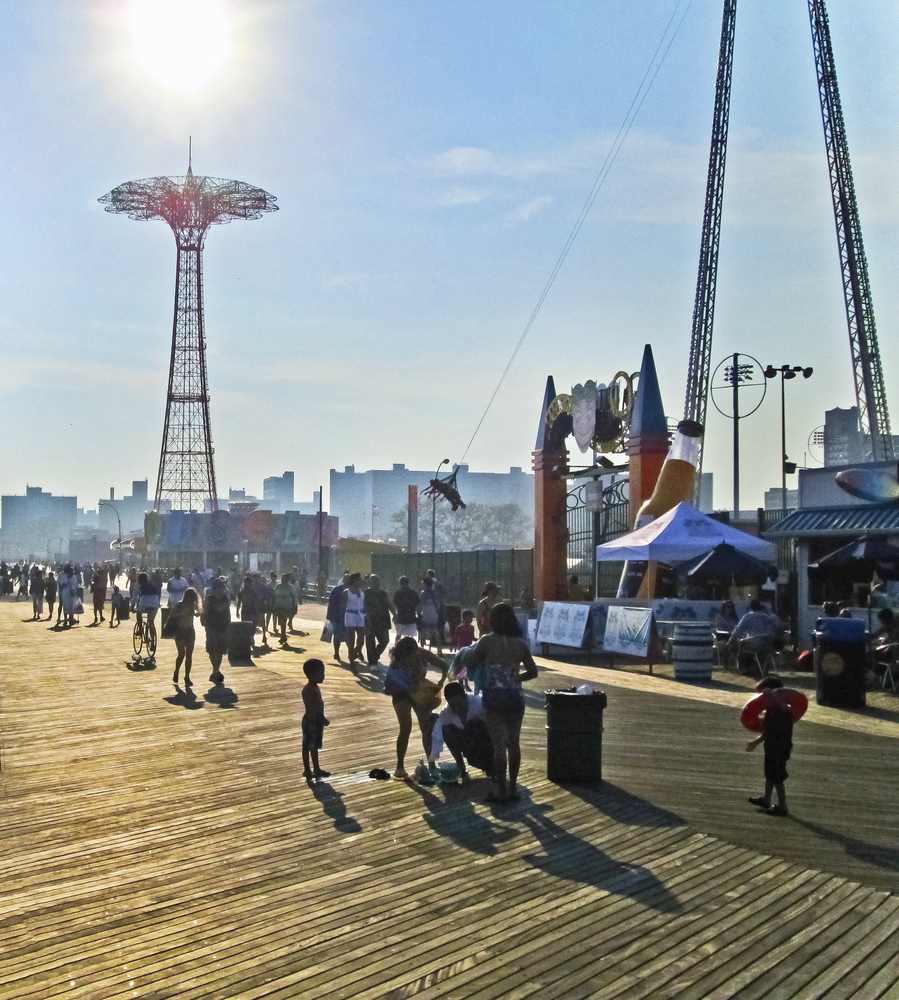
— Photo by andykazie
Brooklyn tops the 2025 City Ratings as the best large U.S. city for biking with an impressive score of 72, marking the highest rating ever achieved by a major American city. The borough has transformed from a cycling afterthought into a two-wheeled powerhouse through dedicated investments in protected infrastructure.
Coney Island boardwalk rides feel like childhood summers. But Brooklyn offers much more than nostalgic beach cruising, with an extensive network of bike lanes connecting neighborhoods from Park Slope to Williamsburg.
Minneapolis
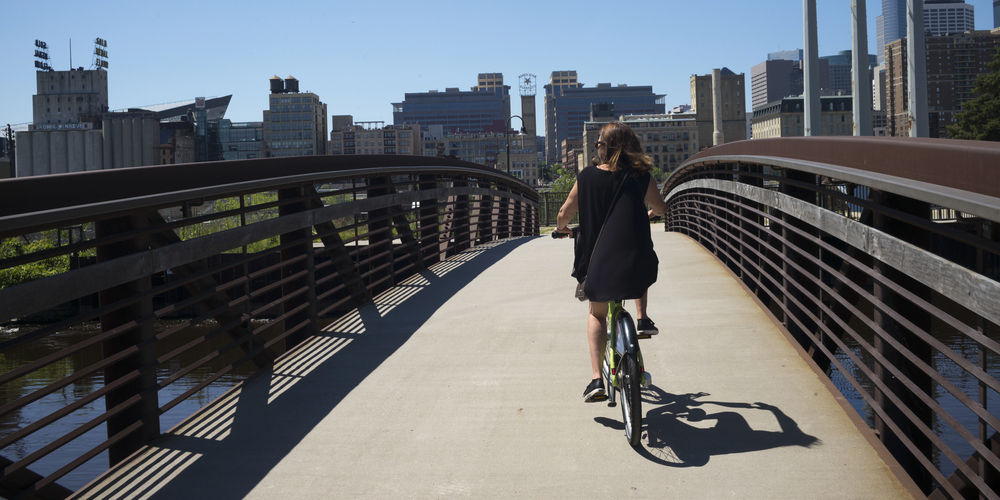
Winter doesn’t stop cyclists here. Minneapolis ranks at 71 points and has lowered its default speed limit from 30 to 20 miles per hour on residential streets while steadily improving bike infrastructure. The city now boasts over 120 miles of on-street bikeways, dedicated bike lanes, and off-street trails, expanding far beyond its historic 51-mile Grand Round Scenic Byway.
Minneapolis achieved an impressive 54-point surge in recent years, proving that systematic investment in cycling infrastructure pays off. Snow removal on bike paths happens faster than most cities clear their sidewalks.
Davis
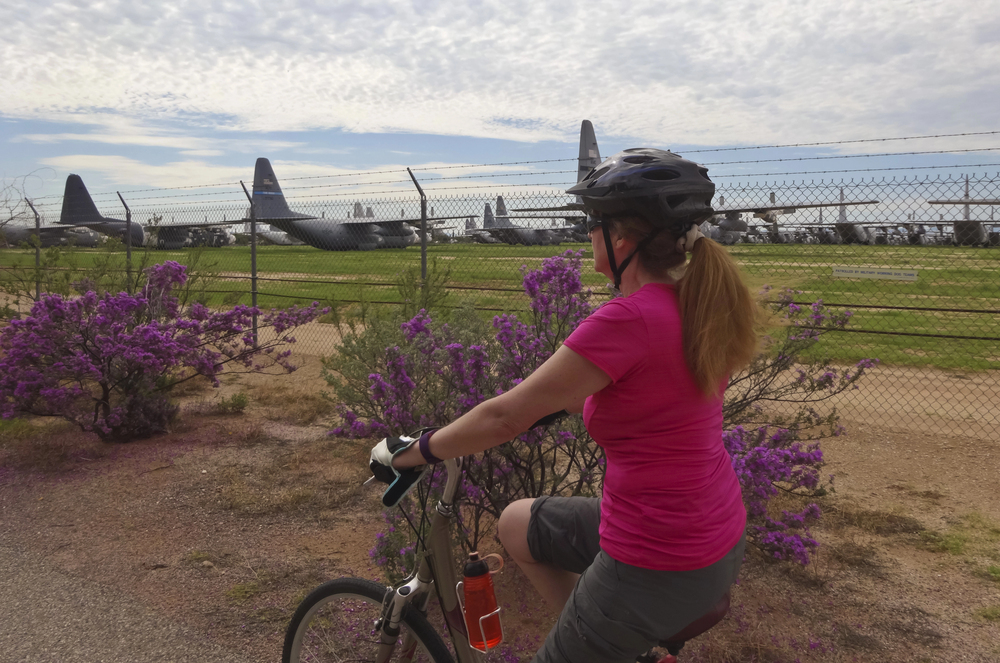
Davis led mid-size cities with populations between 50,000 and 300,000, scoring 81 points—three points above its previous year’s score of 78. This California college town practically invented American bike culture, where professors pedal to lectures and students cruise between classes on everything from vintage Schwinns to modern e-bikes.
The flat terrain makes Davis ideal for beginners. Traffic lights are timed for bicycle speeds, not cars.
Seattle
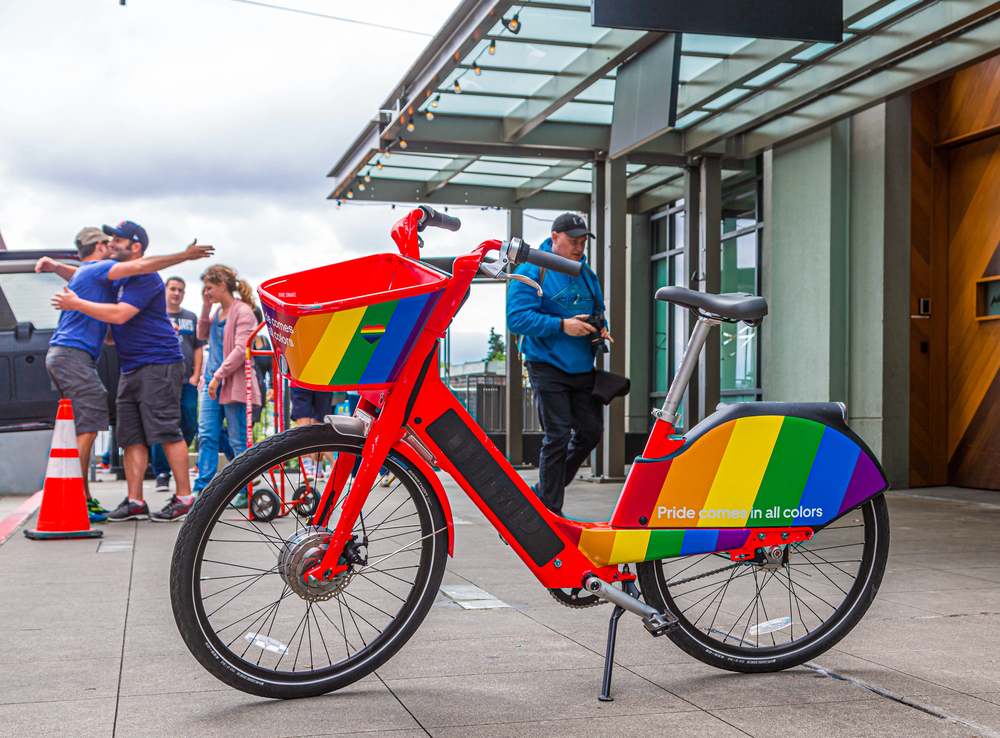
— Photo by dbvirago
Seattle has slashed speeds to 20mph on non-arterial highways and roads, allowing it to rank 56th nationally while boasting a blend of painted bike lanes, fully separated Protected Bike Lanes and Multi-Use Trails. Despite its hilly landscape and infamous rainy season, about 30% of Seattle’s roughly 733,000 residents ride their bikes regularly.
And those hills? They’re why e-bikes were invented. The protected downhill bike lane running from Seattle Center to historic Pioneer Square makes descending feel like flying. Plus, you can hop onto ferries with your bike for island adventures.
San Francisco
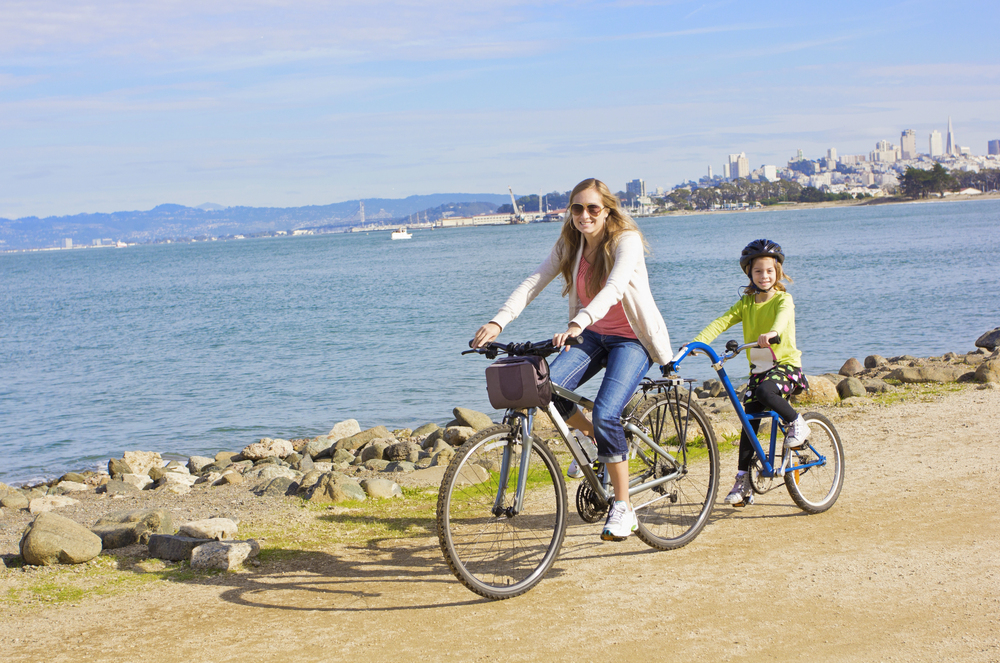
San Francisco has long been celebrated as a bike-friendly city despite its killer hills, with a cap on traffic speed to 20mph in the Tenderloin District and 17 corridors across the city. San Francisco has the most miles of bike lanes of all US cities, though it’s the hilliest city in the US and the second-hilliest in the world.
Those infamous slopes become manageable on an electric bike. With over 200 miles of bike-friendly paths, trails, and roads, cyclists can explore iconic sights like the Golden Gate Bridge or the historic streets of the Mission District. The morning fog rolling over Twin Peaks creates an almost mystical riding experience.
Portland
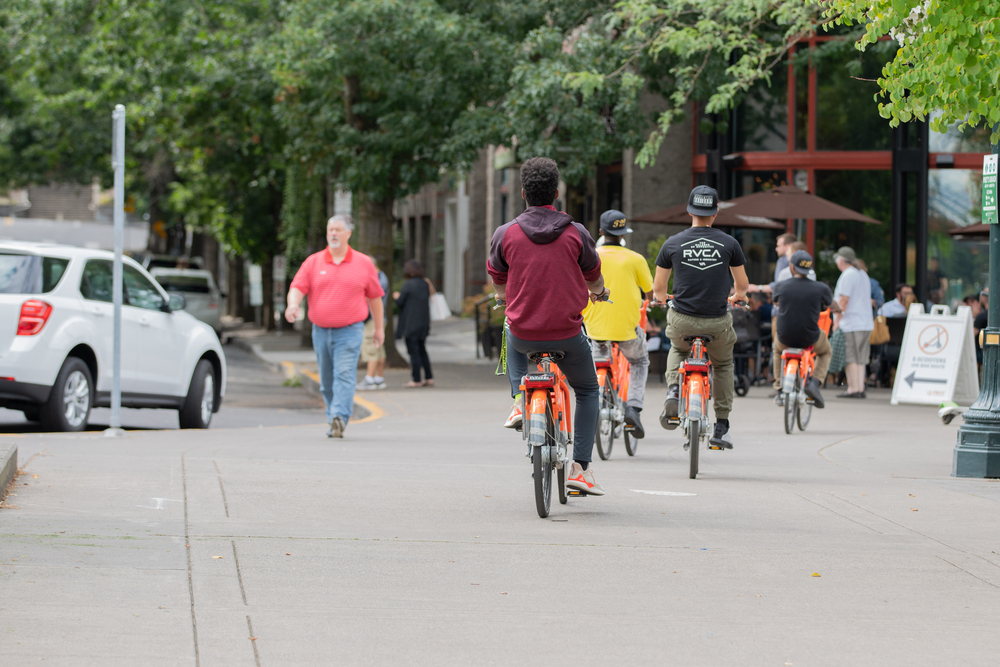
— Photo by frostedcmos@yahoo.com
Portlanders love to cycle, with nearly 6% of residents opting for it as their preferred mode of transport and an even higher percentage choosing to commute by bike. The City of Roses has successfully prioritized cycling for years with an impressive 400 miles of cycling and commuting infrastructure.
Portland’s bike culture runs deep. The city has the highest percentage of commuters who choose to travel by bike and has been named a “platinum” bicycle-friendly community by the League of American Bicyclists. The Nike-sponsored Biketown bike share program offers thousands of e-bikes at subsidized rates, with real efforts to make cycling more inclusive.
Coffee shops welcome muddy mountain bikes after trail rides.
Washington, DC
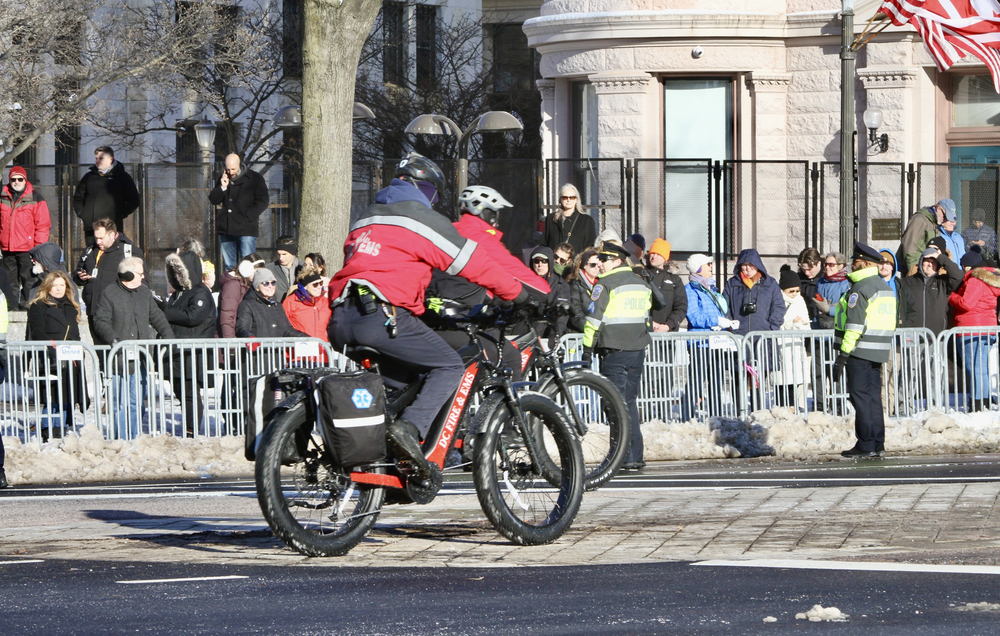
— Photo by thenews2.com
With a bikeability score of 70 out of 100, Washington, DC has built over 100 miles of bike lanes and 24 miles of protected bike lanes, with plans for 20 additional miles by 2024. Famous for traffic and a metro that regularly falls behind schedule, DC has become a bike-commuting and touring mecca with paths that encircle and crisscross the National Mall.
Capital Bikeshare stations are easy to find, and biking saves time when cramming in all the historic sights—you can get from the Capitol to the Lincoln Memorial in a jiffy. The Capital Crescent Trail starts in Georgetown and runs 11 miles through beautiful nature, including the C&O Canal and Potomac River.
Monument hopping becomes a breeze on two wheels.
Denver
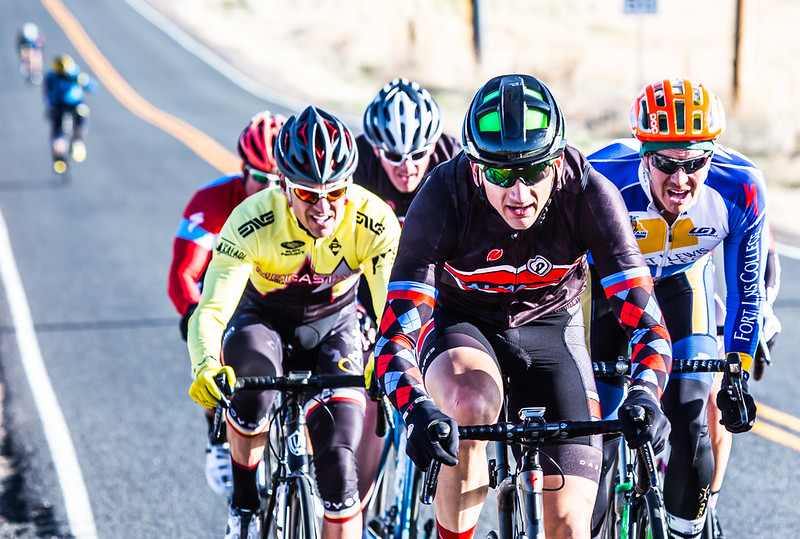
Denver has a bikeability score of 72—32% higher than the average city—and has completed more than half of its goal to install 125 new miles of bike lanes, with 73% of Denver homes now within a quarter mile of a protected bike lane. Despite being next door to some of the continent’s best skiing, the mile-high city is actually on a plateau and one of the US’s flattest cities.
Denver’s most famous bike route is the Cherry Creek Trail, taking you 40 miles from downtown to Cherry Creek Reservoir, connecting beautiful city parks like Confluence Park, Washington Park, and Huston Lake Park. Mountain access is minutes away, but the city itself is surprisingly flat and perfect for leisurely rides.
Saint Paul

Saint Paul delivered 2025’s most dramatic improvement, jumping from 9 points in 2020 to 62 points today, thanks to lowered speed limits and projects like the Jackson Street Reconstruction Project. With plans to add more than 100 new miles of protected bike lanes, Saint Paul’s score is sure to increase in the coming years.
The transformation happened fast. The capital of Minnesota offers over 200 miles of bike-friendly paths, trails, and roads, perfect for taking in historic architecture, picturesque parks, and buzzing streets. Winter bike maintenance here rivals Minneapolis’s commitment.
Chicago
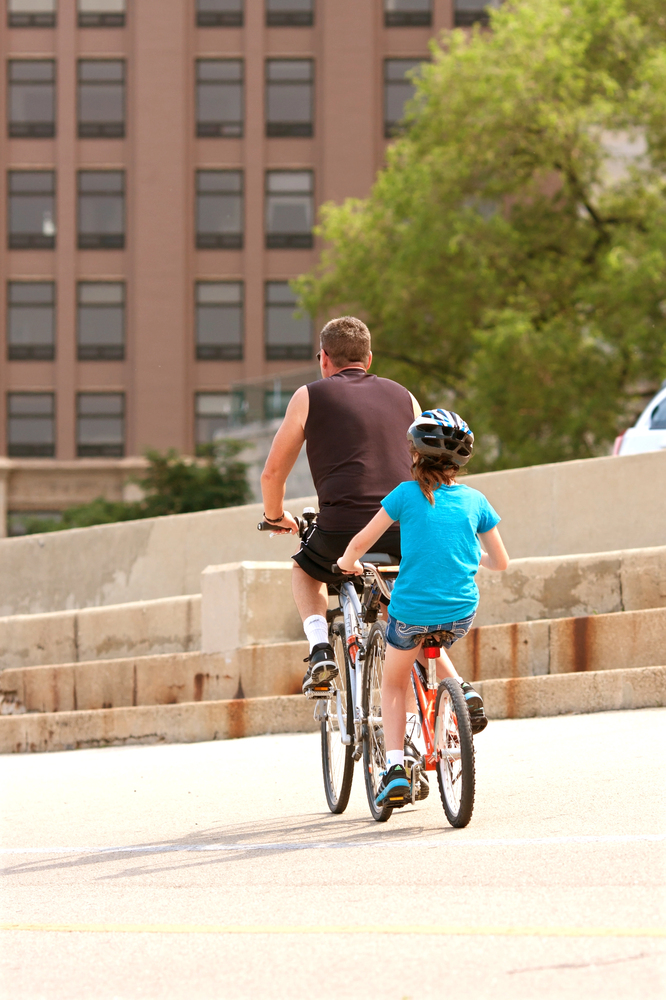
— Photo by BluIz60
Chicago has a bikeability score of 72 out of 100 and plans to add to its existing 350+ miles of on- and off-street bikeways through the Chicago Works Capital Plan, including 12 miles of new protected bike lanes. Chicago offers a unique cycling experience where you can navigate directly across the busy city and enjoy the attractions of a major city while relaxing on beaches just three minutes away.
Everything about Chicago seems big—from the buildings to the lake to the pizza slices—but the sights become much more manageable by bike. The lakefront trail stretches for miles, offering skyline views that never get old. Architecture tours work better on bikes than on tour buses.
Boulder
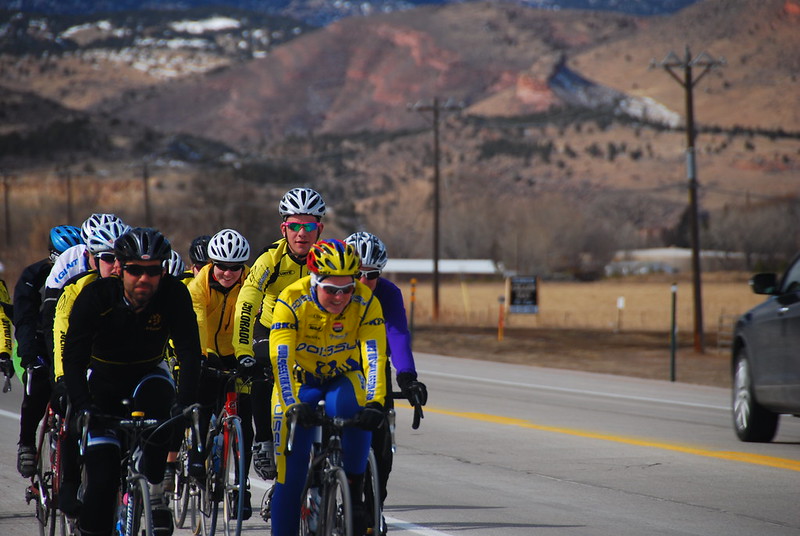
Boulder is fully committed to safe bike commuting and tourism, with bike-safe drain covers and signage throughout the city, while B-cycle bike share allows tourists and locals to rent bikes from numerous locations. The Boulder Creek Path runs 7 miles from Boulder Canyon through downtown to the east, ending in a residential neighborhood.
Boulder is famous for its microbreweries, so if you like bikes and beer, your visit will be paradise. College students pedal everywhere, creating an infectious cycling energy. Mountain biking in the nearby White River National Forest offers trails that double as winter ski destinations.
Austin
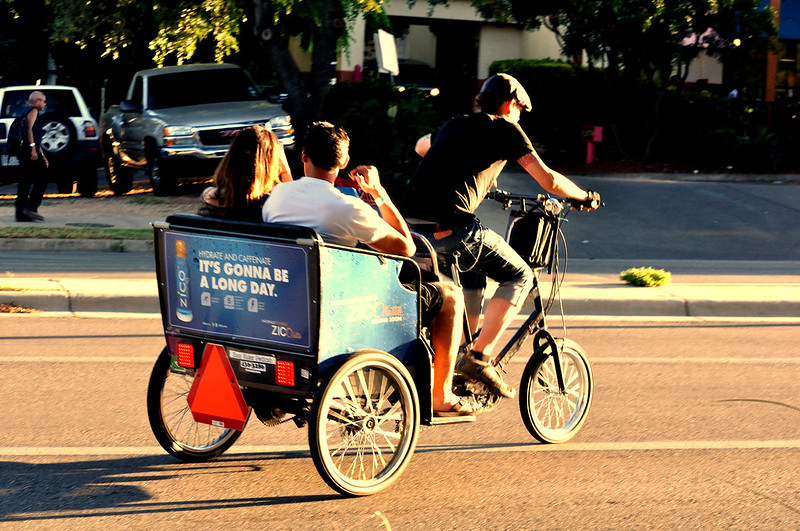
While Austin’s city center boasts 10 miles of protected and on-road bike lanes, the Ann and Roy Butler Hike-and-Bike Trail is the highlight, meandering along the Colorado River past skyscrapers, neighborhoods, and cultural attractions. The 2014 completion included the Boardwalk Trail along Lady Bird Lake, where visitors can see turtles, birds, and fish.
Keep it weird on two wheels. Food trucks welcome sweaty cyclists, and the music scene embraces bike commuters. Swimming holes are perfectly spaced for long ride recovery stops.
Salt Lake City

— Photo by jovannig
Salt Lake City has worked tirelessly to become more bike-friendly, with residents now enjoying 3.3 bike paths per 100,000 residents—80% more than other cities—and a top-five bikeability score of 74 out of 100. In 2014, the city connected bike lanes with one of the country’s first protected intersections, using bike-specific signaling and concrete barriers to minimize interactions between cyclists and drivers.
The mountain backdrop makes every ride scenic. Wide streets accommodate bike lanes without feeling cramped, and the flat valley floor provides relief before tackling canyon climbs.
Boston
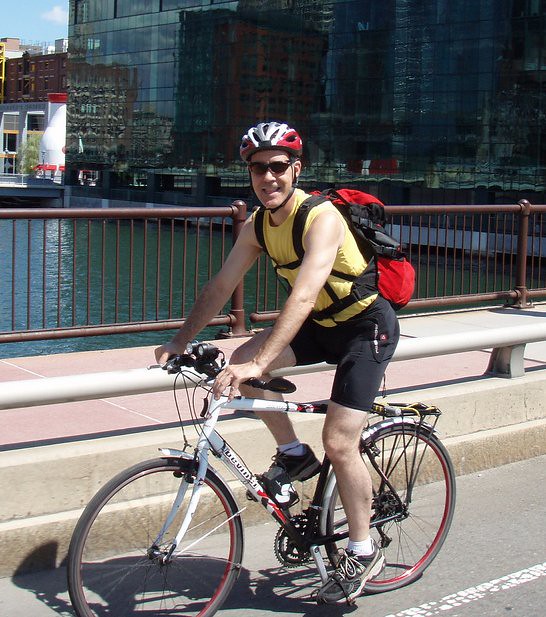
The United States’ first recreational bicycle club was founded in Boston in 1878, and bike riders have only grown more passionate, searching the web for bike-related terms 12% more often than residents in other cities. The Boston cycling community organizes events like the famous Midnight Ride of the Boston Marathon course on the eve of the race.
About 0.7% of Boston employees currently commute to work by bike—75% more than the studied city average. Narrow streets that frustrated colonial horses now perfectly accommodate modern cyclists. Revolution-era routes work surprisingly well for bike tours.
Mackinac Island
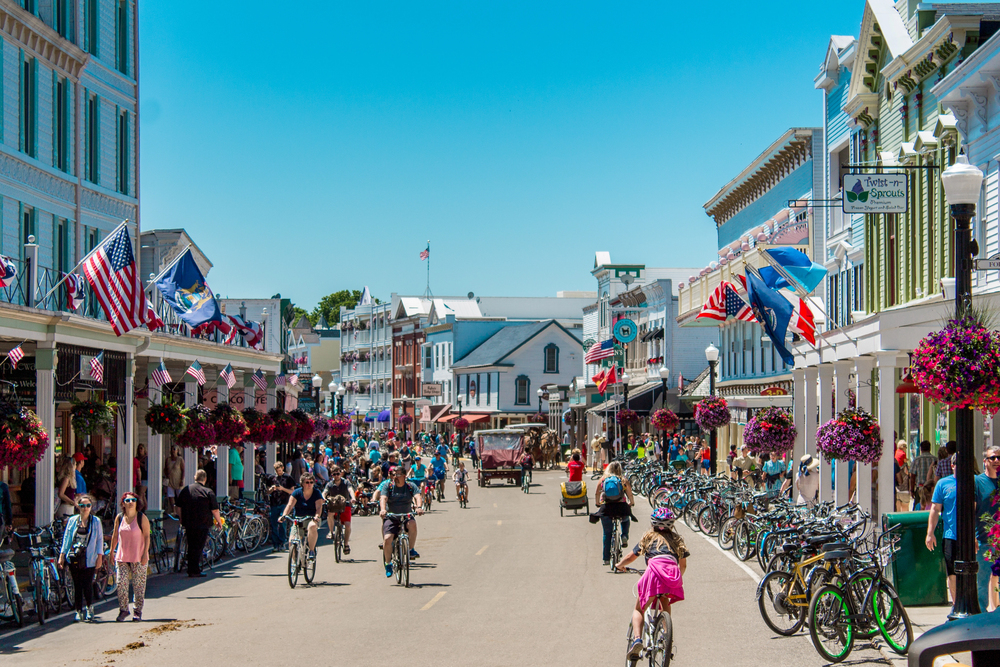
— Photo by mike.s.deemer@gmail.com
Among small cities with populations under 50,000, Mackinac Island came out on top again as the only location to score 100—increasing from its already stellar 2024 score of 99. Cars have been banned since 1898, making this Michigan island a cyclist’s paradise where bikes share roads only with horses and carriages.
A perfect paradise exists. The island provides a truly unique cycling experience where fudge shops, Victorian hotels, and stunning lake views create an almost surreal bike-friendly environment. Time moves differently when cars don’t exist.
Pedaling toward better cities
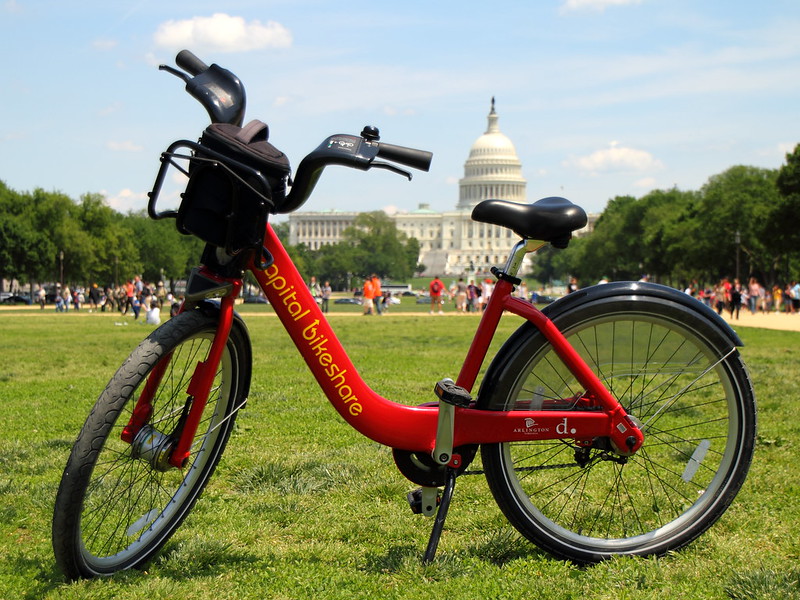
With 234 US cities now scoring 50 points or more on bike-friendliness metrics compared to just 33 in 2019, the cycling revolution is transforming American cities at an unprecedented pace. These destinations prove that bike-friendly infrastructure isn’t just about transportation—it creates more livable, connected, and joyful communities for everyone.
More from Travel Pug

- 20 Best Beach Towns in the Carolinas
- 13 Destinations Where Tourists Regularly Regret Their Trip
- 20 Things You Actually Get in First Class
- 20 Small Airports With Aviation Museums
- 20 Places in the U.S. That Are Perfect for a Reset Trip
Like Travel Pug’s content? Follow us on MSN.
